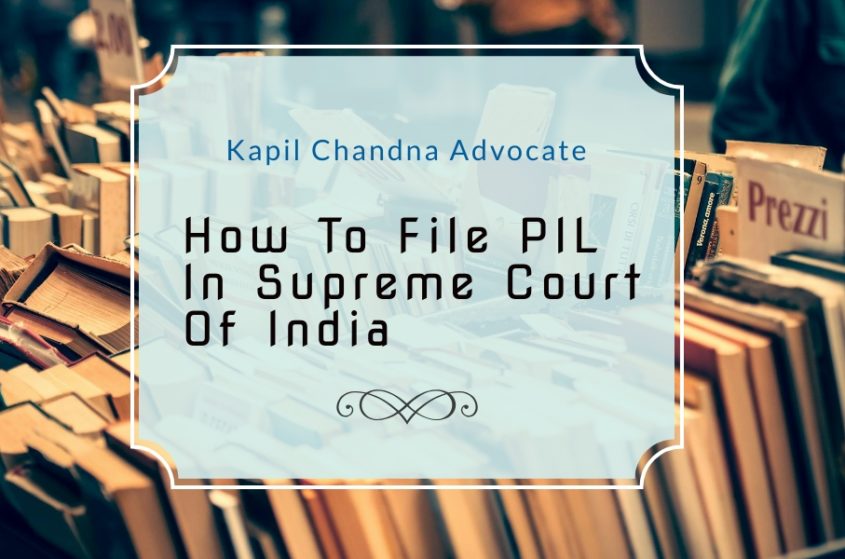How to file a PIL in Supreme Court of India
PILs IN THE SUPREME COURT OF INDIA
PIL that is the “Public Interest Litigation” is directly filed by an individual or group of people in the Supreme Court of India and High Courts of India and judicial magistrate.
The concept of public interest litigation (PIL) is in consonance with the principles enshrined in Article 39A of the Constitution of India to protect and deliver prompt social justice with the help of law. Before the 1980s, only the aggrieved party could approach the courts for justice.
After the emergency era, the high court reached out to the people, devising a means for any person of the public (or an NGO) to approach the court seeking legal remedy in cases where the public interest is at stake. R. Krishna Iyer was among the first judges to admit PILs in court N. Bhagwati and Justice V. Justice P.
Filing a PIL is not as cumbersome as a usual legal case; there have been instances when letters and telegrams addressed to the court have been taken up as PILs and heard.
A PIL is a petition that an individual or a non-government organisation or citizen groups, can file in the court seeking justice in an issue that has a larger public interest. It aims at giving common people access to the judiciary to obtain legal redress for a greater cause.
PIL is not defined in any statute. It is the outcome of judicial activism to take cognisance of a cause at the instance of any person even if it does not affect him personally but affects the public at large.
Read Also: On what grounds can husband filed for divorce?
Difference between a writ and a PIL? How to file a PIL in Supreme Court of India
The name PIL has not been defined in the Constitution and is a more popular name for a Writ issued by the Supreme Court in the exercise of its original jurisdiction under Article 32 of the Constitution of India which is considered to be highly prerogative.
The following steps describe in brief the process how to file a PIL in Supreme Court of India.
- Firstly check about the subject on which one is thinking to file the PIL and read all the details of the provisions of the law and the violations of the law if any being done by the State or any statutory body. PIL can only be filed against any existing legal right or violation of the legal right by the Government.
- Secondly to make a detailed representation regarding the violations being made by the department concerned or the concerned authorities to take the remedial steps in this regard. If possible a reminder to the same may also be given.
- Thirdly to check any arbitrary law, irregularity in the enforcement of law and the class of people being affected by such law or the inactivity of the department concerned.
- Fourthly to collect all the relevant material, press reporting, documents etc in this regard and arrange them chronologically.
- Fifthly to draft a Writ petition under Article 32 of the Constitution of India citing the violations of the law, inactivity of the state and all other grounds. The format for PIL is given below which may be used. It is important to take the assistance or services of a trained legal hand for the purpose.
- Sixthly to prepare and file the PIL in Supreme Court of India before the Registry of the Supreme Court of India and get the matter listed before the court after due scrutiny. The matter is thereafter listed before the Court of hearing and orders accordingly.
Kapil Chandna
Practicing advocate at Supreme Court Of India




